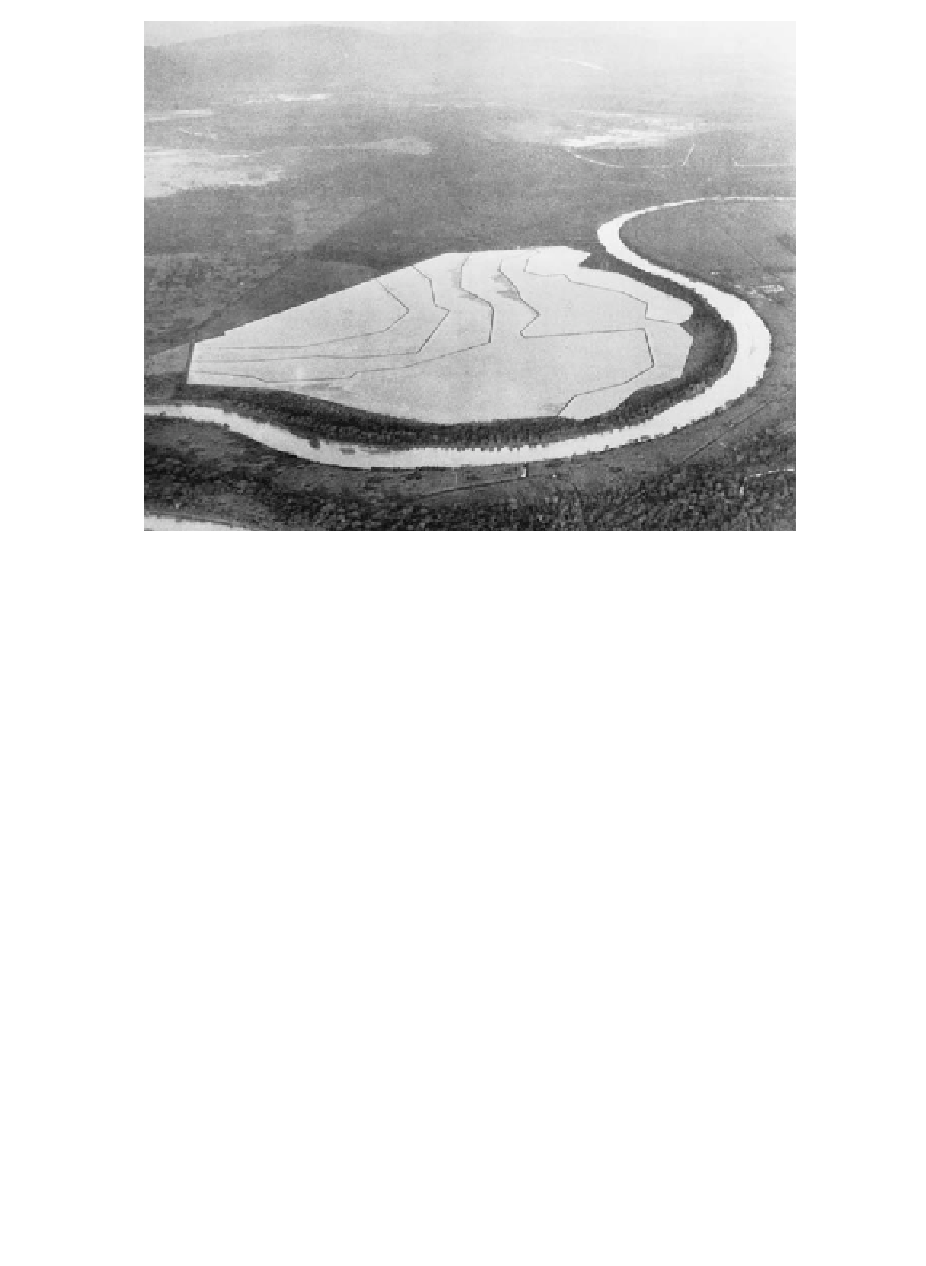Agriculture Reference
In-Depth Information
figure 6.3.AerialviewofUnitedFruitplantationunderfloodfallow(1949).United
FruitCompanyPhotographCollection.BakerLibrary,HarvardBusinessSchool.
withwater.Afteraperiodrangingfromthreetoeighteenmonths,workers
drained and replanted the land with disease-free rhizome materials. In
1942, Dunlap reported that his ''flood-fallowing'' technique was showing
''some success.''
14
Fiveyears later, the company had more than 4,000 hect-
ares in various stages of flood fallowing. The early success of the experi-
ments, combined with the accelerated spread of Panama disease entering
the 1950s, made ''all the more urgent'' the need for ''extensive flood fal-
lowing operations.''
15
By 1953, company workers had flood-fallowed and
replanted some 5,700 hectares of land in the Sula valley.
Standard Fruit Company executives also faced the dilemma of dwin-
dling soil resources in Honduras. In 1941, the company possessed some
25,000 hectares of abandoned banana and coconut lands.
16
By that point,
Standard Fruit was in the process of shifting its production to the upper
Aguán valley where it established o
ces, workshops, and worker housing
in Coyoles, a short distance from Olanchito. Mulling over future plant-
ing projects in a 1941 memorandum, general manager A. J. Chute wrote,
''There is not enough good land at Olanchito for us to be justified in pass-
ing any of it up.''
17
The company began buying small and large properties

